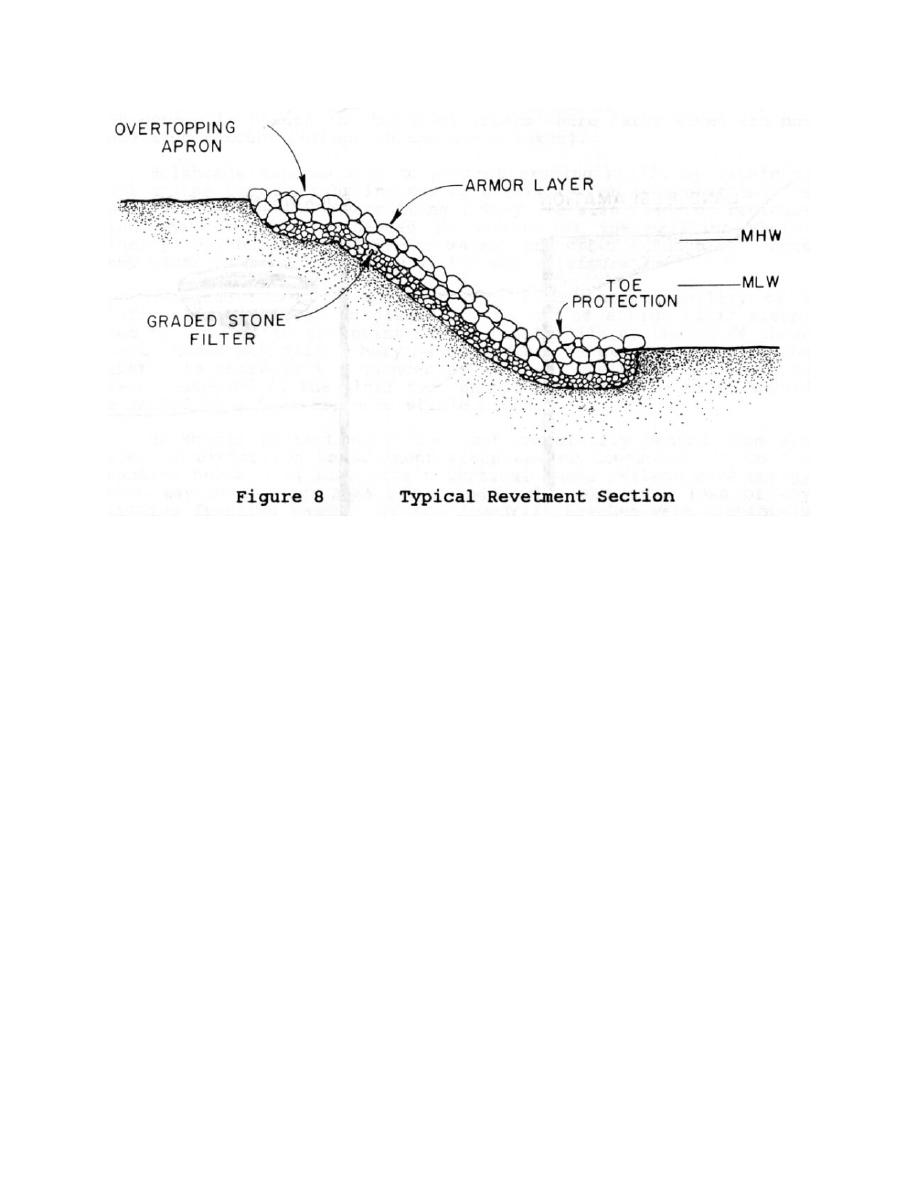
Revetments protect only the land immediately behind them and provide no protection to adjacent
areas. Erosion may continue on adjacent shores, and near the revetment may be accelerated by wave
reflection from the structure, although not as seriously as with vertical-faced bulkheads. Also, the
downdrift shore may experience increased erosion if it was formerly supplied with material eroded from
the now protected area. If a beach is to be maintained in front of a revetment, additional structures such
as groins or detached breakwaters may be required.
A revetment consists of an armor layer, filter and toe. The armor must resist the waves, and
settlement, and provides drainage of slope must be sufficiently flat to provide stability. Typical armor
materials include quarrystone and various concrete blocks. The filter supports the armor groundwater
through the revetment, and prevents the retained soil from being washed through the armor layer by
waves or groundwater seepage. Toe protection prevents displacement of the seaward edge of the
revetment.
Overtopping by green water (not white spray) may cause erosion at the top of the revetment.
Problems from overtopping can be minimized by choosing a structure height that is greater than the
expected runup height, or by providing an overtopping apron at the top of the revetment.
Flanking is another potential problem that can be prevented by tying each end of the revetment
into adjacent shore protection structures or the existing bank. However, if the bank recedes, the ends will
have to be periodically extended to maintain contact.
BREAKWATERS
Breakwaters are constructed offshore to dissipate the energy of approaching waves and form a
protected shadow zone on their landward sides. (Figure 9). The ability of waves to transport sediment is
a function of the wave height-squared, so a relatively modest decrease in incoming wave heights can
22



 Previous Page
Previous Page
